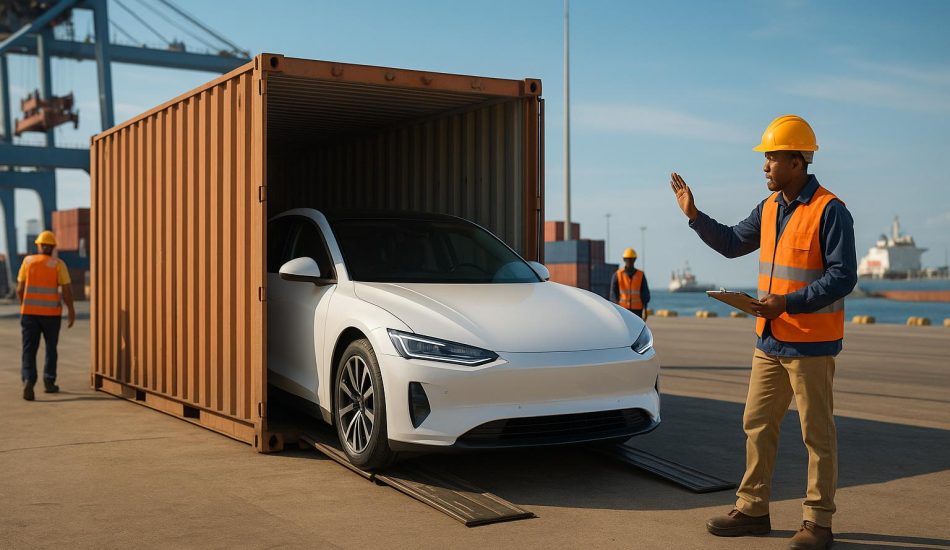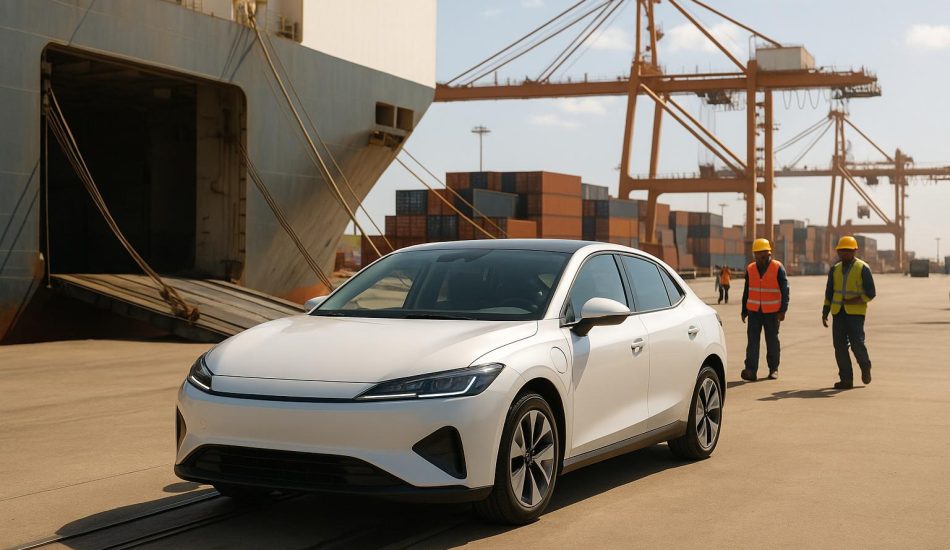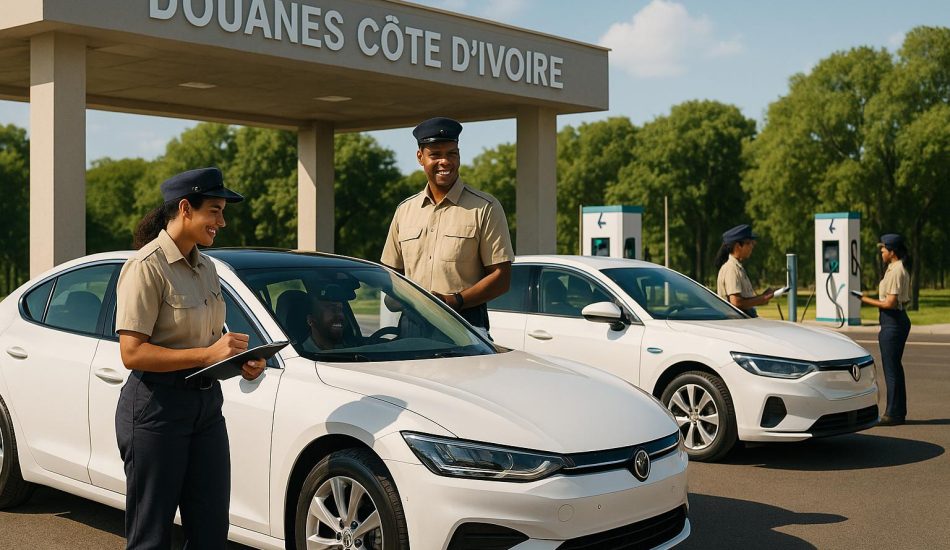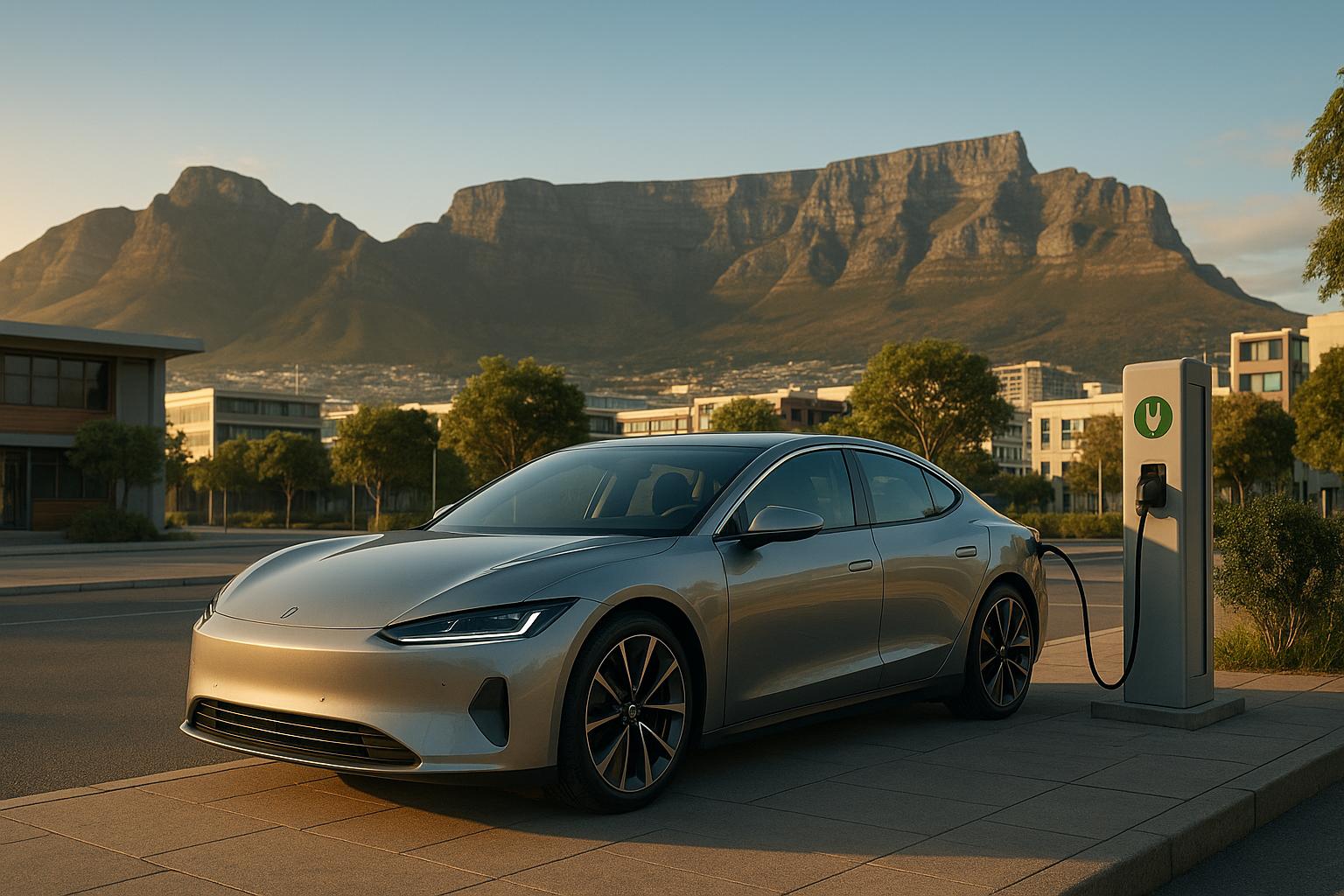
Electric vehicles (EVs) are gaining traction in South Africa, with the market growing by 26.3% in 2025. Here’s a quick look at the top models, their prices, and features to help you decide:
- BYD Seagull: Budget-friendly ($9,859–$12,089), 305–405 km range, ideal for city driving.
- GWM Ora 03: Compact EV ($37,000–$45,000), up to 420 km range, great for urban use.
- BYD Dolphin Mini: Affordable hatchback ($23,300), 340–520 km range, perfect for short commutes.
- BYD Atto 3: Mid-range crossover ($46,600–$55,500), up to 510 km range, family-friendly.
- Volvo EX30: Compact luxury SUV ($55,500–$74,000), 402–420 km range, premium features.
- MG ZS EV: Entry-level SUV (pricing TBD), practical for city driving.
- Tesla Model S Plaid: High-performance sedan ($169,100), 491 km range, luxury and speed.
- Jaguar I-Pace: Premium SUV ($88,300 for 2025 models), sporty and upscale.
- BMW iX xDrive50: Luxury SUV ($93,700–$130,600), up to 630 km range, advanced tech.
Quick Comparison
| Model | Price (USD) | Range (km) | Type | Charging Time (Fast) |
|---|---|---|---|---|
| BYD Seagull | $9,859–$12,089 | 305–405 | Compact EV | 30 mins (30–80%) |
| GWM Ora 03 | $37,000–$45,000 | 310–420 | Compact EV | ~50 mins (0–80%) |
| BYD Dolphin Mini | $23,300 | 340–520 | Hatchback | 25 mins (30–80%) |
| BYD Atto 3 | $46,600–$55,500 | 430–510 | Crossover | 37 mins (10–80%) |
| Volvo EX30 | $55,500–$74,000 | 402–420 | Compact SUV | 26.5 mins (10–80%) |
| MG ZS EV | TBD | TBD | Compact SUV | ~50 mins (0–80%) |
| Tesla Model S Plaid | $169,100 | 491 | Luxury Sedan | TBD |
| Jaguar I-Pace | $88,300 | TBD | Premium SUV | 45 mins (5–80%) |
| BMW iX xDrive50 | $93,700–$130,600 | 467–630 | Luxury SUV | 21 mins (100 km added) |
South Africa’s EV market is evolving, with more affordable models, government incentives, and growing charging infrastructure (400 stations as of 2025). Whether you’re looking for budget options or luxury EVs, there’s something for everyone.
Are electric vehicles actually selling in South Africa? EV and hybrid sales stats 2024
1. BYD Seagull
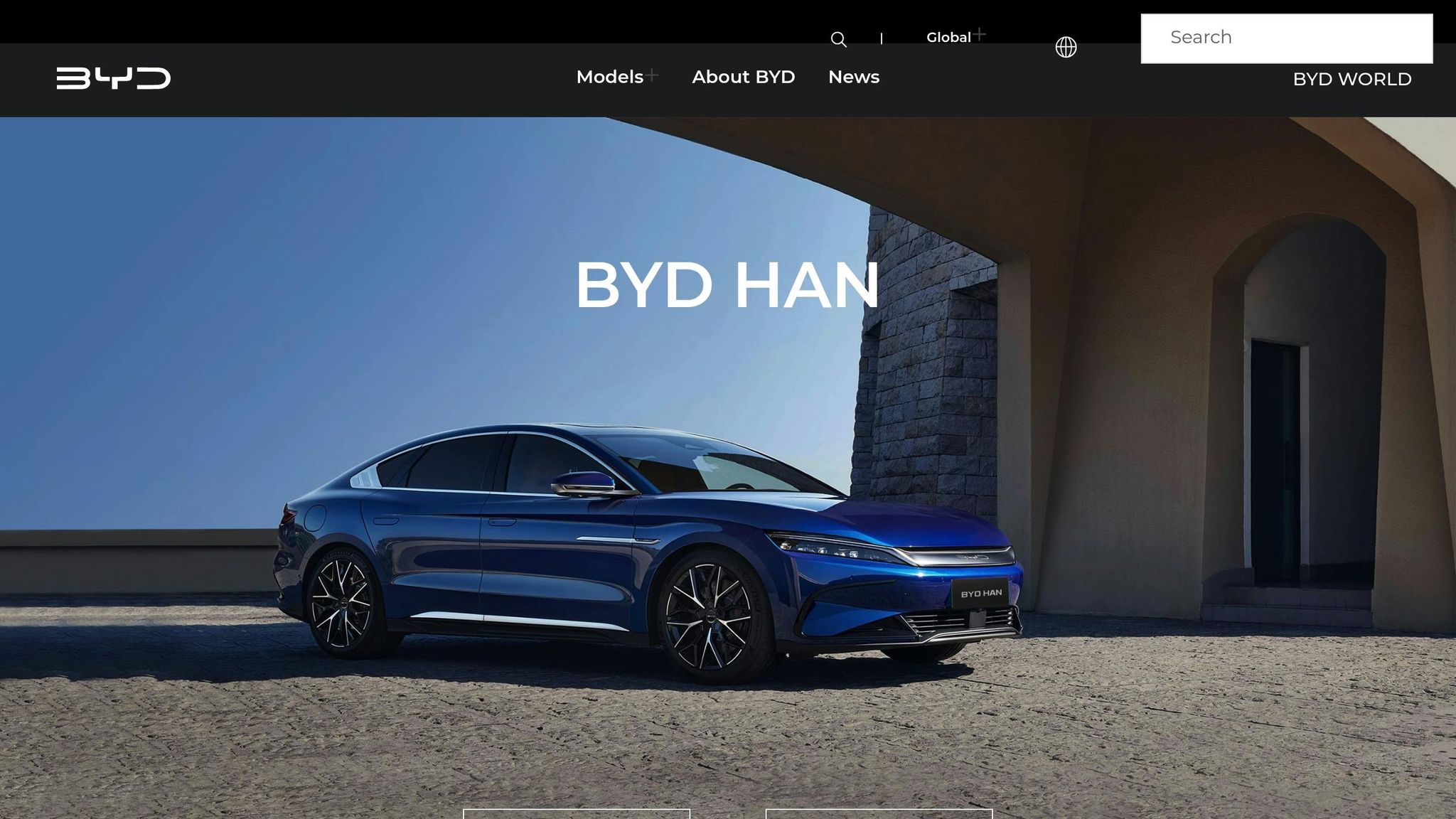
The BYD Seagull is making waves as one of the most budget-friendly electric vehicles set to hit the South African market in late 2025. Designed with urban mobility in mind, this compact EV is tailored for everyday city life.
Price Range
With a price tag between $9,859 and $12,089, the Seagull is a much cheaper alternative to models like the BYD Dolphin ($35,593–$39,593) and the GWM Ora 300/400 ($45,330–$55,130). This competitive pricing, paired with its multiple battery options, makes it an appealing choice for urban drivers.
Range (km)
The Seagull comes with two battery options: a 30 kWh battery offering an estimated 305 km range and a 39 kWh version delivering up to 405 km (based on CLTC standards). However, real-world tests in the Philippines showed a range of 250–270 km with air conditioning in use, and similar conditions in South Africa could further influence these figures.
Performance (kW/hp)
While the Seagull isn’t built for high performance, its compact design focuses on efficiency, making it ideal for daily city commutes. Its manageable power and nimble handling cater perfectly to urban environments.
Charging Speed
Charging the Seagull is convenient and adaptable. Fast charging can take the battery from 30% to 80% in just 30 minutes. For overnight charging, it takes 4.3 hours for the 305 km model and 5.6 hours for the 405 km edition. The 305 km versions support up to 30 kW fast charging, while the 405 km model can handle up to 40 kW. This flexibility is especially useful given South Africa’s evolving charging infrastructure.
2. GWM Ora 03
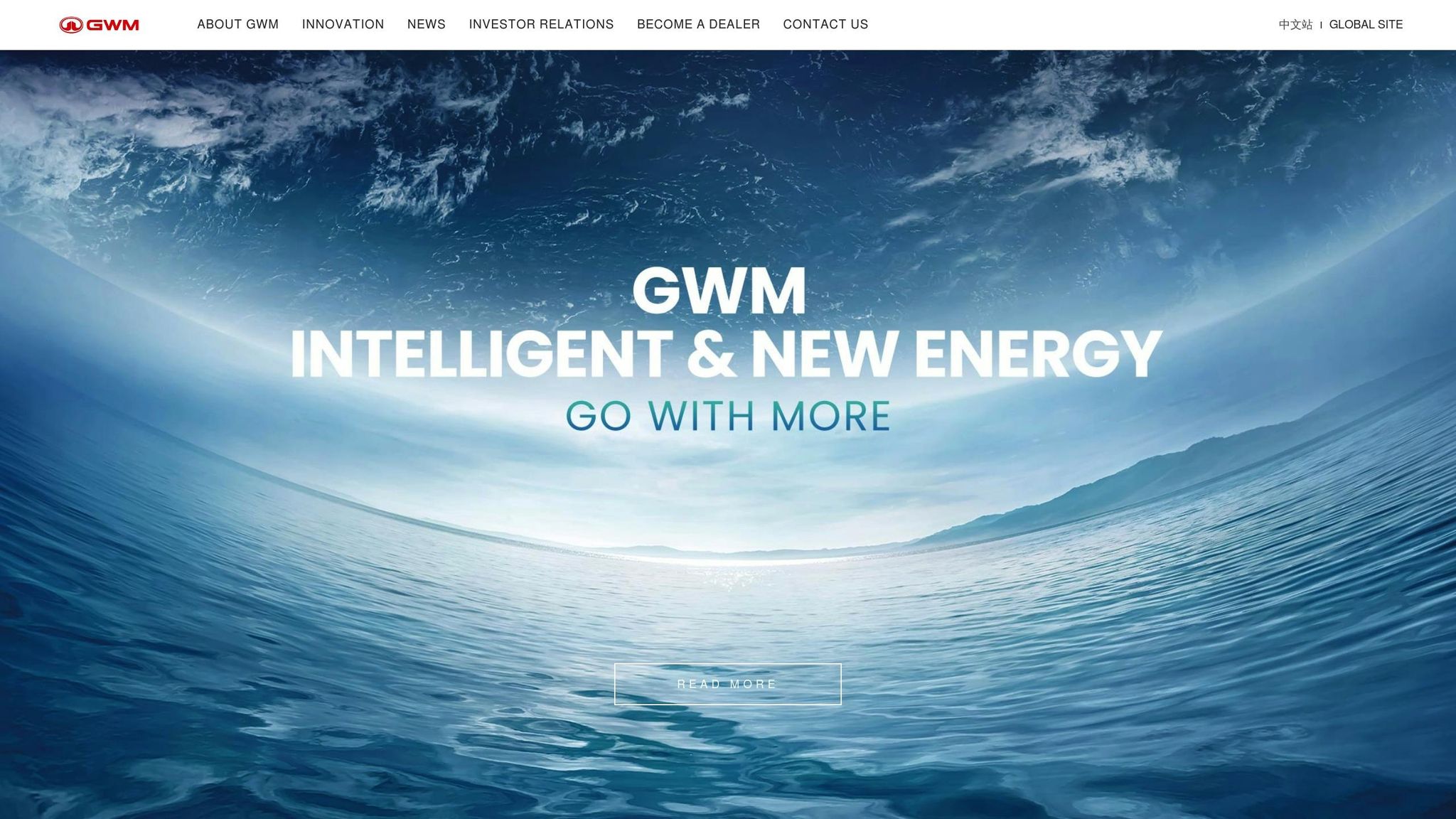
The GWM Ora 03 is making waves as one of South Africa’s most budget-friendly battery-electric vehicles, offered in four trims. This compact EV combines a sleek design with practical features, making it a great option for urban driving. Let’s take a closer look at its specifications.
Price Range
The price of the Ora 03 starts at R686,950 for the 300 Super Luxury model and goes up to R835,950 for the top-tier 400 GT Ultra Luxury trim.
Range (km)
The driving range of the Ora 03 depends on its battery size. Two options are available: a 48 kWh battery, which offers a WLTP range of 310 km, and a 63 kWh battery, which delivers up to 420 km. In real-world conditions, the 48 kWh version achieves an average of around 260 km, though weather conditions can impact performance.
Performance (kW/hp)
The Ora 03 lineup offers power outputs ranging from 105 kW to 126 kW, depending on the variant. Here’s a breakdown of the performance specs:
| Variant | Power (kW) | Power (hp) | Torque (Nm) | Battery (kWh) |
|---|---|---|---|---|
| 300 Super Luxury | 105 | 141 | 210 | 48 |
| 400 Super Luxury | 105 | 141 | 210 | 63 |
| 400 Ultra Luxury | 126 | 169 | 250 | 63 |
| 400 GT Ultra Luxury | 126 | 169 | 250 | 63 |
The 48 kWh model can go from 0 to 60 mph in just 8 seconds.
Charging Speed
The Ora 03 is equipped for both AC and DC fast charging, making it convenient for everyday use while also supporting faster charging when you’re in a hurry.
3. BYD Dolphin Mini
The BYD Dolphin Mini takes the spotlight as South Africa’s most affordable EV for 2025. Designed with city life in mind, it’s a budget-friendly alternative to traditional gas-powered hatchbacks, making it a practical option for urban drivers.
Price Range
Starting at an estimated US$23,300 (around R350,000), the Dolphin Mini is positioned to compete with popular gasoline hatchbacks like the Hyundai i20 1.4 Executive, Peugeot 208 1.2 Active, and Fiat 500 1.2 Style. Its pricing, combined with a variety of configurations, makes it a flexible choice for different urban driving needs.
Range
The Dolphin Mini is available in multiple versions to match varying driving habits. The Smart Driving Edition boasts a CLTC-rated range of 520 km, while the Essential variant offers a WLTP range of 340 km. Other versions provide up to 380 km of range under NEDC conditions. While it shines in city driving, the Dolphin Mini is better suited for short commutes rather than long road trips. This balance ensures a good mix of range and maneuverability for urban environments.
Performance
Built for efficiency, the Essential variant features a 70 kW (94 hp) electric motor with 180 Nm of torque, allowing it to go from 0 to 62 mph in 12.3 seconds. This performance is tailored to the stop-and-go nature of city traffic.
Charging Speed
Charging is straightforward with the Dolphin Mini. It includes both fast and slow charging ports located on the right front fender. The fast charging option supports up to 80 kW, taking the battery from 30% to 80% in just 25 minutes. If you opt for the slower charging method, a full recharge of the 45.12 kWh LFP (Lithium Iron Phosphate) Blade Battery takes about 6.44 hours. For the Australian Essential variant, the maximum DC charging rate is capped at 60 kW, making it convenient for quick charging stops during longer drives.
4. BYD Atto 3
The BYD Atto 3 is a compact-to-midsized electric crossover that comfortably sits between budget-friendly and premium EV options. With more room than the smaller Dolphin Mini, it’s a great choice for families or anyone needing extra cargo space. It fills a sweet spot in South Africa’s growing EV market, catering to those who want something larger than compact urban models but not quite as high-end as premium crossovers.
Price Range
The Atto 3 strikes a balance between affordability and premium features. According to TechCentral, the 2025 BYD Atto 3 is priced between $51,100 and $55,500 (R768,000 – R835,000). Meanwhile, Cars.co.za lists the starting price for new 2025 models a bit lower, ranging from $46,600 to $51,900 (R699,890 to R779,995). This pricing places it above the BYD Dolphin, which ranges from $35,900 to $39,900, but still below the premium Volvo EX30, priced between $52,700 and $70,200.
Range
The Atto 3 offers two battery options to suit different driving needs. The 49.92 kWh battery delivers a range of up to 430 km (267 miles) under CLTC standards or 345 km (214 miles) under WLTP. The larger 60.48 kWh battery extends the range to 510 km (317 miles) CLTC or 420 km (261 miles) WLTP.
In real-world scenarios, city driving in mild weather can achieve up to 490 km. However, highway driving in colder conditions reduces the range to around 235 km. This makes it ideal for daily commutes and shorter regional trips, though it’s less suited for extensive road trips, as reflected in its long-distance suitability rating of 2/5.
Performance
The Atto 3 delivers solid performance for its category. It features good acceleration and handling, earning praise from automotive experts. In fact, Drive named it the "2023 Drive Car of the Year Best EV under $70,000", a testament to its strong standing in the affordable EV market.
Top Gear gave it a score of 7/10, appreciating its overall performance but noting some drawbacks like average braking and limited cargo space. Its energy consumption is rated at 13 kWh/100 km under WLTP combined testing, reinforcing its practicality for everyday urban driving.
Charging Speed
Charging flexibility is another highlight of the Atto 3. It comes equipped with a CCS2 socket for both AC and DC charging. For home charging, it supports up to 7 kW single-phase AC power, enabling a full charge in about 6 hours and 30 minutes when using an 11 kW home charger.
For faster charging on the go, the Standard Range model supports up to 70 kW DC charging, while the Long Range version can handle up to 88 kW. Using an 89 kW DC charger, the battery can go from 10% to 80% in just 37 minutes, making it a convenient option for longer drives with planned charging stops.
5. Volvo EX30
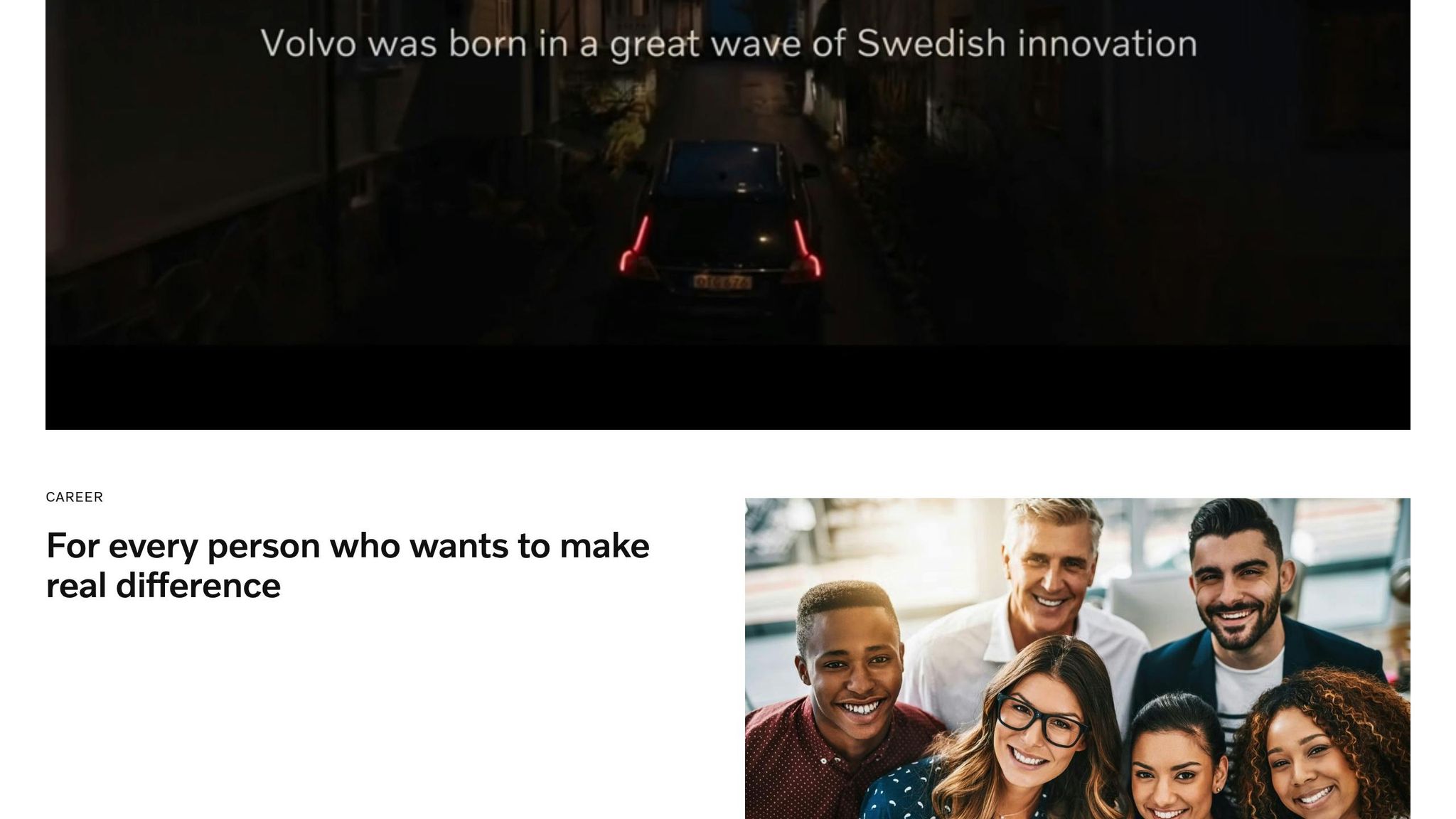
The Volvo EX30 is a standout in the compact electric SUV category, offering a blend of luxury and practicality at a more approachable price point. Known for Volvo’s legendary safety and build quality, it has quickly become a favorite in South Africa, where it accounts for over 30% of new BEV sales, solidifying its position as a market leader.
Price Range
The EX30 comes in several trims to cater to a variety of budgets and preferences:
- Core Single Motor: Starts at $55,500 (R835,500).
- Plus Single Motor Extended Range: Priced at $64,300 (R968,400).
- Ultra Single Motor Extended Range: Costs $71,700 (R1,080,200).
- Ultra Twin Motor Performance: Tops the range at $74,000 (R1,114,000).
This pricing structure allows buyers to choose the level of luxury and performance that fits their needs.
Range
The EX30’s driving range depends on the specific configuration:
- Single Motor Extended Range: Offers 257-261 miles (414-420 km), varying by wheel size.
- Twin Motor Performance: Provides 250-253 miles (402-407 km).
However, real-world conditions can significantly impact range. In a 75-mph highway test by Car and Driver, the Twin Motor model managed only 160 miles (257 km), falling short of its EPA estimate. This underscores the importance of factoring in actual driving conditions, especially for long trips.
Performance
When it comes to driving dynamics, the EX30 delivers. Car and Driver describes it as "perky, balanced, and attractive". Beyond its handling, the EX30 shines in efficiency. The Twin Motor Performance model achieves an EPA-estimated 116/100 MPGe (City/Highway), outpacing rivals like the Tesla Model X, which is rated at 98/89 MPGe.
Charging Speed
Charging is another area where the EX30 excels. With DC fast charging, it can go from 10% to 80% in just 26.5 minutes using a 153kW station, making it a great option for road trips.
For home charging, a Level 2 (240V) charger adds about 30 miles (48 km) of range per hour. Fully recharging from 0% to 100% with an 11kW Level 2 charger takes approximately 6 hours and 16 minutes. The EX30 also includes battery preconditioning, which helps optimize the battery for fast charging, particularly in colder weather.
The car uses standard charging connectors, including a CCS plug for DC fast charging and a J1772 connector for Level 2 AC charging. It’s also equipped with bidirectional charging capabilities, which could open up additional uses in the future.
6. MG ZS EV
The MG ZS EV provides an affordable entry point into the world of electric vehicles. This compact SUV has earned a solid reputation globally, with the MG ZS lineup surpassing one million units sold and covering over 700 million kilometers in everyday driving conditions.
While pricing for the MG ZS EV in South Africa hasn’t been finalized, the petrol version offers some clues. The Comfort trim starts at around R289,900 (approximately $19,300), while the Luxury trim is priced at R309,900 (approximately $20,600). The vehicle also comes with a 7-year/200,000 km warranty and a 5-year/60,000 km service plan, reinforcing the brand’s confidence in its reliability.
Range
Designed with urban and commuter drivers in mind, the MG ZS EV is aimed at the same market segment as popular compact crossovers like the Chery Tiggo 4 Pro, Volkswagen T-Cross, and Toyota Starlet Cross. Although specific range details for the electric version aren’t provided, it promises to meet the needs of city driving with its practical range and versatile charging capabilities.
Charging Speed
The MG ZS EV supports a range of charging methods, catering to South Africa’s developing infrastructure. Whether you’re charging at home or using a fast commercial charger, the vehicle offers flexible options:
| Charger Type | Charge Level | Duration |
|---|---|---|
| Normal Domestic Power Plug (15A) | 0–100% | 16–18 Hours |
| AC Charger 7.4 kW | 0–100% | 6–8 Hours |
| DC Fast Charger 15 kW | 0–80% | 2.5–3 Hours |
| DC Fast Charger 25 kW | 0–80% | 1.5–2 Hours |
| DC Fast Charger 50 kW | 0–80% | 50 Minutes |
With a 50 kW DC fast charger, you can get the battery to 80% in just 50 minutes. For those who prefer overnight charging, a 7.4 kW AC charger can fully charge the vehicle in 6–8 hours. These flexible charging options make the MG ZS EV a practical choice for everyday urban use.
sbb-itb-99e19e3
7. Tesla Model S Plaid 2025
The Tesla Model S Plaid stands as a premium electric sedan with a price tag that reflects its flagship status.
Price Range
In the United States, the Model S Plaid starts at $94,990. However, when imported into South Africa, the cost skyrockets due to additional taxes, including a 15% VAT, a 25% EV import tax, and an ad valorem tax, bringing the total to over R3,043,996 (around $169,100). Tesla CEO Elon Musk has pointed to these steep import duties as a key reason for Tesla’s absence from the South African market.
Performance (kW/hp)
The Model S Plaid is powered by a tri-motor system that generates a staggering 1,020 horsepower (761 kW). This setup includes a 421-horsepower front motor and two rear motors, each producing 414 horsepower, delivering a combined torque of 1,050 lb-ft. This immense power enables the car to sprint from 0 to 60 mph in just 1.99–2.1 seconds and hit a top speed of 200 mph. To put its torque into perspective, it nearly doubles that of the Ferrari 296 GTB.
Range
Equipped with a 100 kWh battery pack, the Model S Plaid offers varying ranges depending on driving conditions. Here’s how it performs under different scenarios:
| Driving Condition | Range (km) | Range (miles) |
|---|---|---|
| City – Mild Weather | 790 | 491 |
| Highway – Mild Weather | 535 | 332 |
| Combined – Mild Weather | 645 | 401 |
| City – Cold Weather | 525 | 326 |
| Highway – Cold Weather | 410 | 255 |
| Combined – Cold Weather | 470 | 292 |
In real-world highway tests at sustained speeds, the car delivers a range of about 450 km (280 miles).
Charging Speed
The Model S Plaid supports Tesla’s Supercharger network and other DC fast charging options, though specific charging speeds haven’t been disclosed. Its large battery emphasizes the need for robust charging infrastructure to keep up with its demands. This aligns with its reputation as a high-performance electric vehicle.
While it faces growing competition from luxury EVs like the Porsche Taycan Turbo GT, the Model S Plaid remains a top choice for South African buyers seeking unmatched acceleration and raw power in an electric sedan.
8. Jaguar I-Pace EV400
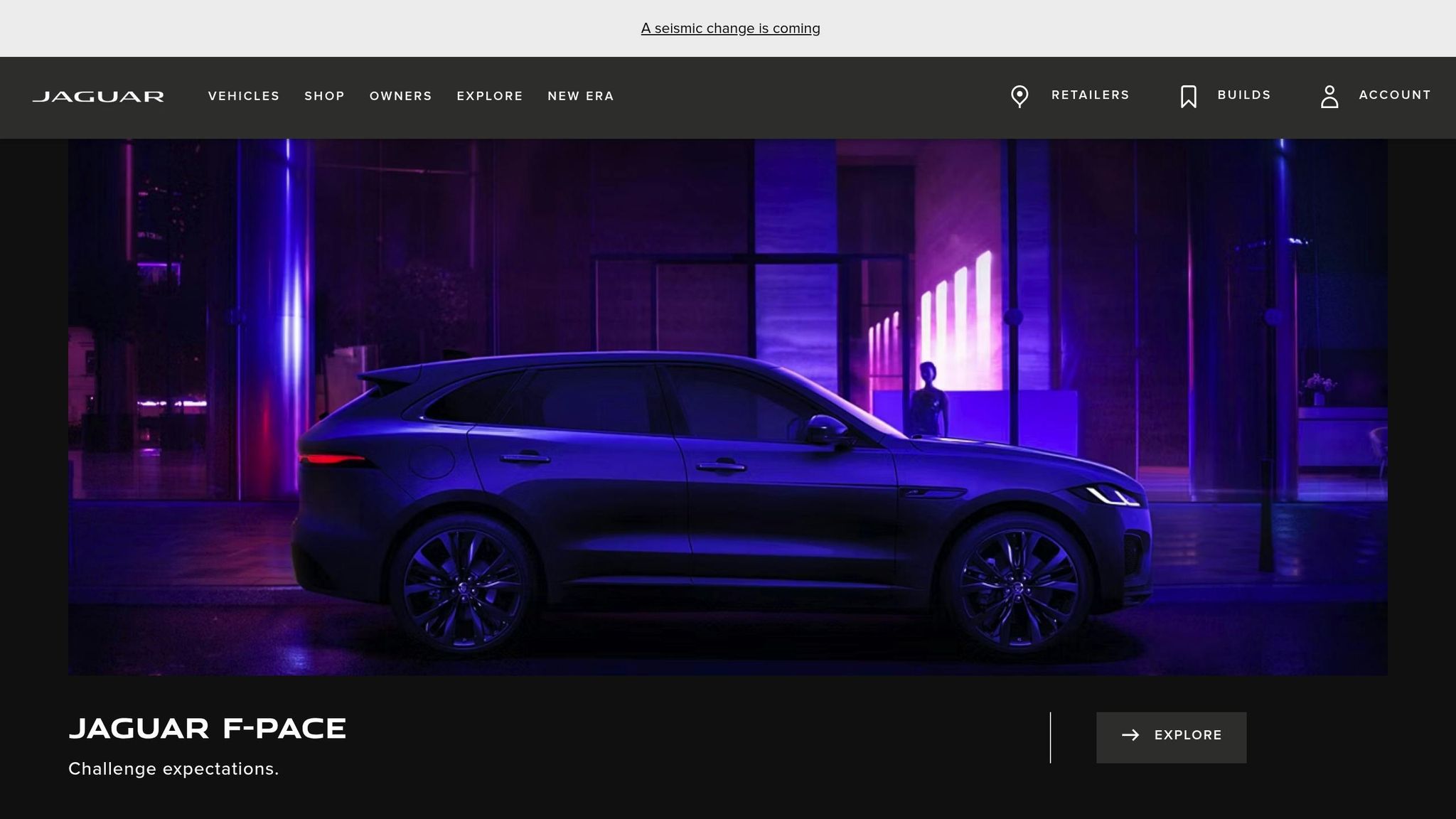
The Jaguar I-Pace EV400 stands out in South Africa’s electric vehicle market as a blend of sporty performance and upscale luxury. With its distinctive British styling and dynamic capabilities, it offers an appealing choice for those seeking a premium EV experience.
Price Range
In South Africa, you can find used Jaguar I-Pace models at various price points to suit different budgets. For instance, a 2025 I-Pace EV400 AWD HSE R-Dynamic is priced at R1,589,990 (around $88,300). A 2023 I-Pace S 90kWh goes for R903,900 (approximately $50,200), while earlier models from 2019 are available between R547,900 and R799,900 (roughly $30,400 to $44,400), depending on the trim level.
Performance
The I-Pace EV400 delivers a thrilling driving experience thanks to its dual-motor setup and all-wheel drive. It accelerates with ease, surpassing many high-performance benchmarks. Compared to rivals like the BMW iX3, Mercedes EQE SUV, or Audi Q6 e-tron, the I-Pace offers a more engaging and sporty feel, though those models might edge ahead in practicality and range. Still, the I-Pace balances spirited performance with respectable range capabilities, making it a strong contender in its class.
Range
Powered by a 90kWh battery pack, the I-Pace EV400 is well-suited for both daily commutes and longer road trips across South Africa. While exact range figures aren’t specified, its performance is comparable to other premium electric SUVs, ensuring versatility for most driving needs.
Charging Speed
The I-Pace offers flexible charging solutions that align with its premium status. Using a CCS connector, it can charge from 5% to 80% in about 44–45 minutes with a 104kW DC charger. For home charging, an 11kW AC system can fully recharge the battery in around 9 hours. If you’re in a hurry, a 100kW DC fast charger can add roughly 127 km of range in just 15 minutes. This versatility makes it convenient for various charging scenarios.
9. BMW iX xDrive50

The BMW iX xDrive50 brings a blend of German engineering and electric luxury to South Africa’s EV landscape. This midsize electric SUV combines advanced technology with BMW’s signature driving experience, making it an appealing option for those who value both performance and refinement. Comparable in size to the BMW X5 and X6, it offers a spacious and versatile design suited for various needs.
"The all-electric 2025 iX is something to behold. This midsize SUV is spacious, comfortable, surprisingly efficient and ridiculously agile for its size. If you can get past its slightly polarizing design, you may just fall in love with this electric BMW." – Edmunds
Price Range
The BMW iX xDrive50 stands out in the premium segment, with a price tag of R2,350,000 (around $130,600). However, a promotional price of R1,687,000 (approximately $93,700) makes it more accessible. For comparison, the entry-level iX xDrive40 is priced at R1,735,000 (about $96,400), making the xDrive50 a clear step up in both luxury and performance.
Range
Equipped with a 105.2-kWh battery, the iX xDrive50 offers a range of up to 630 km according to the manufacturer, 521 km based on EPA estimates, and real-world tests show it achieves up to 467 km. Its energy consumption is impressively efficient, staying below 21.45 kWh per 100 km.
Performance
Under the hood, the iX xDrive50 boasts dual electric motors that generate 516 horsepower and 564 lb-ft of torque. This power allows the SUV to accelerate from 0 to 60 mph in just 4.0 to 4.4 seconds. The xDrive all-wheel-drive system, combined with ARB-X acceleration slip control, ensures smooth handling even with a curb weight of 5,670 pounds. It also features a top speed of 124 mph, making it both agile and powerful.
Charging Speed
Designed for both city driving and long-distance travel, the iX xDrive50 supports high-power charging stations, adding up to 100 km of range in just 21 minutes. Its aerodynamic design, with a drag coefficient of 0.25, enhances both efficiency and charging performance. Looking ahead, BMW plans to adopt Tesla’s North American Charging Standard (NACS) connector by 2025, offering even more charging options for future buyers.
Advantages and Disadvantages
When it comes to South Africa’s EV market, understanding the benefits and drawbacks of different models is key to making an informed decision. Here’s a breakdown of what to expect across various price points and categories.
Budget-Friendly Options: Affordable, but Basic
For those looking to dip their toes into electric mobility without breaking the bank, models like the BYD Seagull and BYD Dolphin Mini are worth considering. The BYD Dolphin Mini, priced at around $23,300, makes EV ownership more accessible to a wider audience. These cars are perfect for city driving but come with trade-offs like limited range and fewer features.
The GWM Ora 03 sits in the middle of the budget spectrum, offering a decent range and modern amenities, making it a solid choice for those seeking a balance of affordability and functionality.
Mid-Range Champions: Where Performance Meets Practicality
In the mid-range category, the BYD Atto 3 and Volvo EX30 shine with an appealing mix of performance and value. The Volvo EX30, for example, delivers impressive acceleration, going from 0 to 62 mph in just 3.6 seconds. Meanwhile, the MG ZS EV stands out for its reliable performance and established service network, making it a go-to option for buyers who prioritize dependability. These models strike a good balance between price and features, preparing buyers for the step up to premium vehicles.
Premium Performance: Luxury Comes at a Price
For those who want the best of the best, high-end models like the BMW iX xDrive50, Jaguar I-Pace, and Tesla Model S Plaid offer cutting-edge technology, luxurious features, and extended range. However, this level of refinement comes with a hefty price tag, making these cars more suitable for buyers who prioritize luxury over cost.
Charging Infrastructure: A Work in Progress
While EV technology is advancing, South Africa’s charging infrastructure still lags behind. With only about 300 charging stations compared to 5,000 fuel stations, range anxiety remains a significant concern. Models with longer ranges can help mitigate this issue, but budget options may struggle in this environment.
Resale Value: A Mixed Picture
EVs tend to depreciate faster than their gasoline-powered counterparts. On average, EVs lose about 13.9% of their value annually, compared to 10.4% for traditional cars. A 2025 analysis by MyBroadband revealed that many used EVs were selling for over a third less than their original price, even with mileage under 31,000 miles. For example, Tesla owners have experienced a 27% year-over-year decline in resale value, while the Jaguar I-Pace has depreciated by around 72% over five years. However, emerging research suggests that battery degradation – one of the main factors affecting resale value – occurs more slowly than many fear, hinting that depreciation rates may eventually stabilize.
Operating Costs: Long-Term Savings
Although EVs often come with higher upfront costs, they offer significant savings in day-to-day expenses. Recharging an EV for 250 miles costs approximately $11.10, compared to $55.50 for 310 miles on fuel. This makes EVs an attractive option for those looking to save on operating costs over time.
| Price Category | Models | Key Advantages | Main Disadvantages |
|---|---|---|---|
| Budget ($19K–$46K) | BYD Seagull, Dolphin Mini, GWM Ora 03 | Affordable entry point, low running costs | Limited range, fewer features |
| Mid-Range ($42K–$59K) | BYD Atto 3, Volvo EX30, MG ZS EV | Balanced performance and range | Moderate depreciation, limited charging options |
| Premium ($93K–$130K+) | BMW iX xDrive50, Jaguar I-Pace, Tesla Model S Plaid | Luxury features, extended range | High purchase cost, steep depreciation, costly maintenance |
Market Challenges: The Bigger Picture
Despite growing interest in EVs, South Africa’s adoption rate remains low. Only 502 EVs were sold last year, accounting for just 0.1% of the passenger vehicle market. Early adopters face unique challenges, including limited service networks, concerns about parts availability, and the impact of load shedding on home charging. These factors highlight the hurdles that still exist in the local EV market.
Battery health is another critical factor for used EV buyers. While concerns about battery degradation heavily influence resale values, recent studies suggest that batteries degrade more slowly than previously thought. This could mean that current depreciation rates are higher than they need to be, offering some hope for improved resale values in the future.
Conclusion
South Africa’s electric vehicle (EV) market has seen notable growth, with sales rising from 503 units in 2022 to 845 in 2023.
Budget-friendly models like the BYD Seagull and Dolphin Mini have made EVs more accessible, especially for urban commuters. For those seeking a mid-range option, vehicles like the popular Volvo EX30, BYD Atto 3, and MG ZS EV combine modern features, solid performance, and reliable service networks. On the premium end, models such as the BMW iX xDrive50, Jaguar I-Pace, and Tesla Model S Plaid offer high-end luxury, cutting-edge technology, and exceptional performance – though at a higher price point.
These categories reflect evolving consumer preferences and provide insight into where the market is headed. According to GreenCape, the South African EV market is projected to grow to 25,456 vehicles by 2030, with an estimated market value of R13.9 billion (around $535 million). Chinese manufacturers are playing a pivotal role by introducing cost-effective alternatives. For potential buyers, evaluating the availability of charging infrastructure and considering long-term savings on fuel and maintenance is crucial. Vehicles priced between $31,000 and $58,000 often strike the best balance between features, range, and overall value.
"Although the rate of EV adoption in South Africa won’t depend solely on the products on offer, it’s likely to be driven by more affordable models, such as the finalists of the 2025 CarsAwards EV category, of which the Mini Countryman SE ALL4 is our winner." – Hannes Oosthuizen, Cars.co.za
FAQs
What is driving the growth of the electric vehicle market in South Africa by 2025?
The electric vehicle (EV) market in South Africa is gaining momentum, and several factors are fueling this shift. Soaring fuel prices and a growing commitment to addressing climate change are persuading many to move away from traditional gas-powered cars. On top of that, South Africans are increasingly appreciating the long-term cost benefits of EVs, from lower fuel expenses to reduced maintenance needs.
Another key factor driving this change is the growth of charging infrastructure, which is making EVs more convenient for everyday use. On the policy side, government initiatives like reduced import duties and buyer incentives are helping to make EVs more affordable and appealing. Together, these elements are expected to play a major role in accelerating EV adoption across South Africa by 2025.
How does South Africa’s charging network affect the practicality of electric cars?
South Africa’s Charging Infrastructure for EVs
The practicality of owning an electric vehicle (EV) in South Africa heavily depends on the availability and reliability of charging infrastructure. As of 2025, the country boasts over 500 public charging stations, with most located in major urban hubs like Johannesburg, Cape Town, Durban, and Pretoria. To make long-distance travel more convenient for EV owners, efforts are being made to establish fast-charging corridors along key highways – helping to ease range anxiety.
Frequent power outages present a unique challenge, but private companies are stepping up by investing in solar-powered charging stations. These renewable energy solutions not only improve reliability but also add a layer of sustainability to the network. Despite these advancements, some areas still face issues with uneven station distribution and occasional reliability concerns. Even so, the expanding infrastructure is gradually making EV ownership a more practical option for South Africans.
What should South African buyers consider when choosing between budget, mid-range, and premium electric cars?
When choosing between budget, mid-range, and premium electric vehicles (EVs), South African buyers should keep a few critical points in mind:
- Driving range: Budget EVs typically offer a range of 125–150 miles, suitable for city commutes and shorter trips. Premium models, on the other hand, can go beyond 300 miles, making them a better fit for long-distance travel.
- Charging infrastructure: The availability of charging stations can vary significantly by region. It’s essential to check if your area has enough charging points to support your EV needs.
- Upfront and long-term costs: Budget-friendly EVs come with a lower price tag initially, but premium models often provide better long-term savings through reduced running and maintenance expenses.
By considering these factors, buyers can select an EV that aligns with their driving habits and financial priorities.


